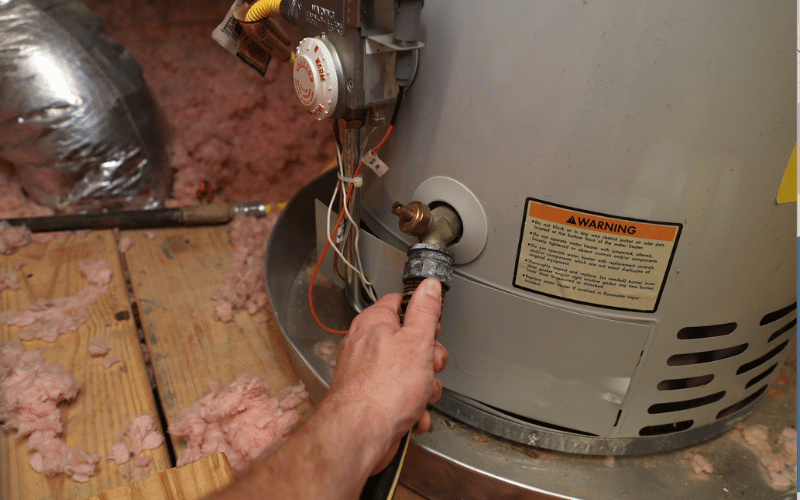Caring for Your Home's Hot Water System: Important Guidelines
Caring for Your Home's Hot Water System: Important Guidelines
Blog Article
How do you really feel on the subject of Tips For Maintaining Your Hot Water Heater?

Hot water is important for everyday convenience, whether it's for a revitalizing shower or cleaning meals. To guarantee your warm water system runs effectively and lasts longer, normal upkeep is crucial. This article supplies functional suggestions and insights on just how to keep your home's warm water system to stay clear of disruptions and pricey repair services.
Introduction
Maintaining your home's hot water system might seem daunting, but with a couple of straightforward steps, you can guarantee it runs efficiently for years to find. This guide covers everything from recognizing your hot water system to DIY upkeep pointers and knowing when to call in expert assistance.
Importance of Preserving Your Warm Water System
Normal upkeep not just prolongs the life-span of your hot water system however additionally guarantees it runs effectively. Neglecting upkeep can cause reduced effectiveness, greater power bills, and also early failure of the system.
Indicators Your Hot Water System Demands Upkeep
Recognizing when your warm water system needs interest can avoid significant concerns. Keep an eye out for indicators such as inconsistent water temperature level, odd sounds from the heating unit, or corroded water.
Purging the Water Heater
Purging your hot water heater removes debris buildup, improving performance and lengthening its life.
Checking and Changing Anode Rods
Anode poles avoid deterioration inside the tank. Inspecting and changing them when worn is vital.
Complex Problems Requiring Professional Help
Examples include significant leakages, electric issues, or if your hot water heater is continually underperforming.
Routine Expert Maintenance Conveniences
Expert maintenance can consist of detailed evaluations, tune-ups, and ensuring compliance with safety criteria.
Evaluating and Adjusting Temperature Setups
Readjusting the temperature level settings ensures ideal performance and safety.
DIY Tips for Upkeep
You can perform a number of upkeep jobs on your own to maintain your warm water system in top condition.
Looking for Leaks
Consistently examine pipes and links for leakages, as these can cause water damage and higher costs.
Recognizing Your Warm Water System
Prior to diving right into maintenance jobs, it's practical to understand the standard elements of your hot water system. Usually, this consists of the hot water heater itself, pipelines, anode rods, and temperature level controls.
Monthly Upkeep Tasks
Regular month-to-month checks can help capture minor problems prior to they rise.
Evaluating Pressure Alleviation Valves
Examining the pressure safety valve ensures it operates correctly and stops extreme stress build-up.
Insulating Pipes
Protecting warm water pipelines minimizes warmth loss and can save energy.
When to Call a Professional
While DIY maintenance is useful, some problems require specialist proficiency.
Conclusion
Routine maintenance of your home's warm water system is necessary for efficiency, durability, and price savings. By adhering to these ideas and understanding when to look for specialist aid, you can make sure a reliable supply of warm water without unforeseen disturbances.
How to Maintain an Instant Hot Water Heater
Before tinkering with your hot water heater, make sure that it’s not powered on. You also have to turn off the main circuit breaker and shut off the main gas line to prevent accidents. Also turn off the water valves connected to your unit to prevent water from flowing into and out of the appliance. 2. When you’re done, you have to detach the purge valves’ caps. These look like the letter “T†and are situated on either side of the water valves. Doing so will release any pressure that has accumulated inside the valves while at the same time avoid hot water from shooting out and burning your skin. 3. When the purge valves’ caps are removed, you have to connect your hosing lines to the valves. Your unit should have come with three hoses but if it didn’t, you can purchase these things from any hardware or home repair shops. You can also get them from retail stores that sell water heating systems. Read the user’s manual and follow it to complete this task properly. When the hosing lines are connected, open the purge port’s valves. 4. You should never use harsh chemical cleaners or solutions when cleaning your unit. Make use of white vinegar instead. It should be undiluted and you’ll probably use about 2 gallons. 5. Now flush your water heater. This task should probably take about 40 minutes. We can’t give you specific directions for this because the procedure is carried out depending on the type, model and brand of your heater. With that being said, refer to the user’s manual. 6. When you’re done draining the unit, you have to turn off the purge port valves again. Remove the hosing lines that you earlier installed on each of the water valves. Put the valve caps (purge port) back in their respective places and be very careful so as not to damage the rubber discs that are found inside these caps. 7. Now that everything’s back in place, check your user’s manual again to find out how to reactivate your water heating system. 8. Once it is working, turn one of your hot water faucets on just to let air pass through the heater’s water supply pipes. Leave the tap on until water flows smoothly out of it. https://www.orrplumbing.com/blog/2014/september/how-to-maintain-an-instant-hot-water-heater/

Do you like reading about Tips on Maintaining a Water Heater? Give a remark down below. We will be pleased to hear your thoughts about this article. We are looking forward that you come back again before long. Are you aware of another person who is excited about the topic? Be sure share it. Many thanks for being here. Revisit us soon.
Contact Us Now Report this page